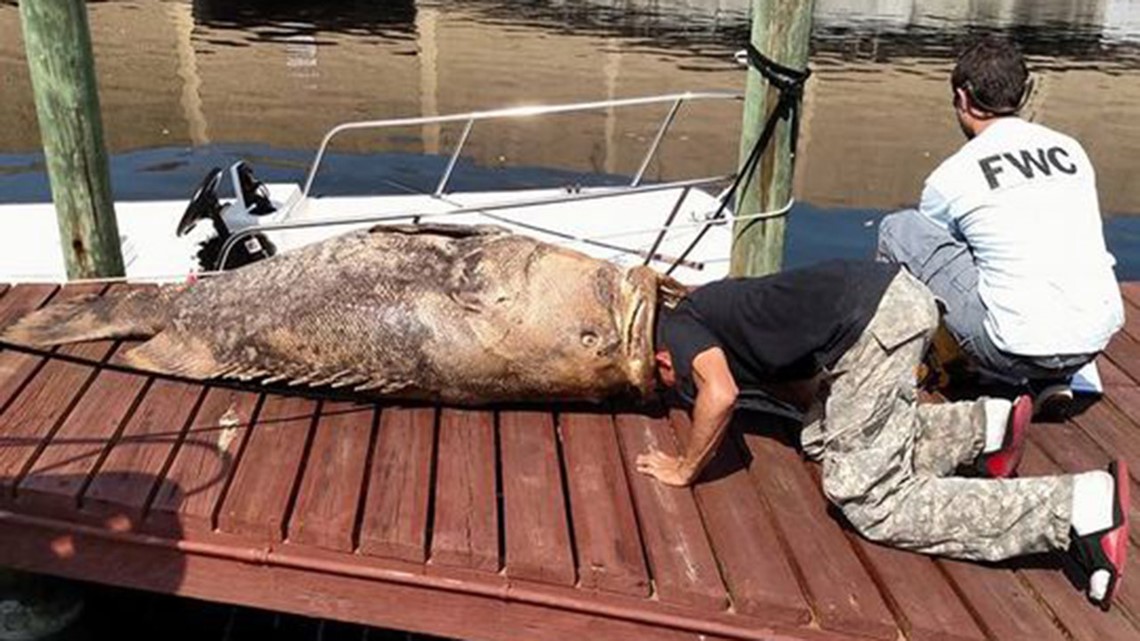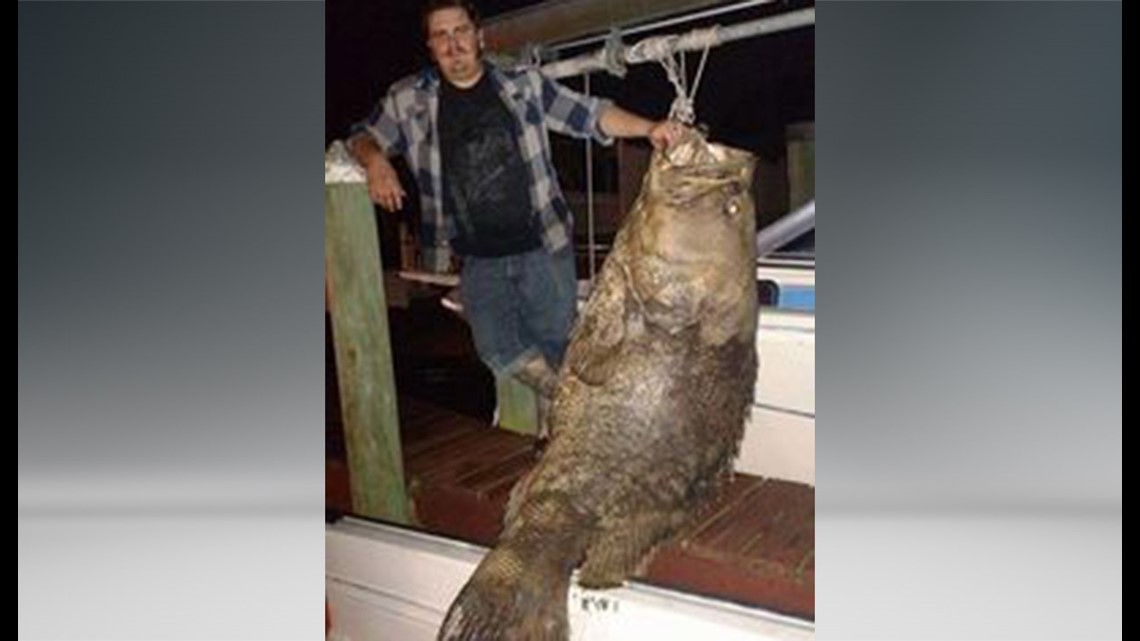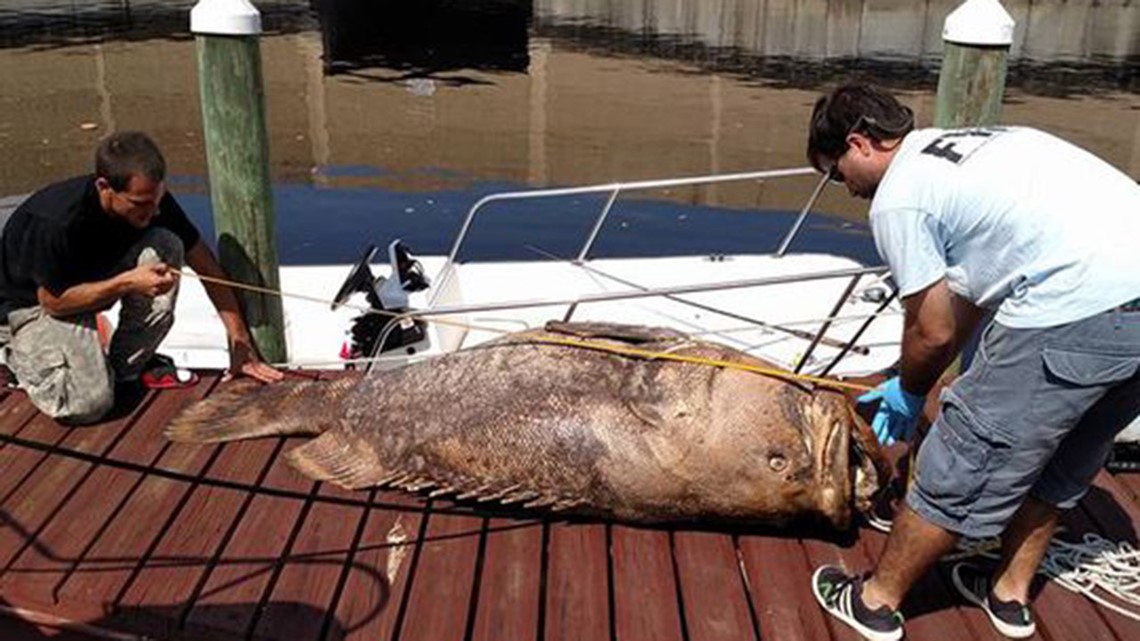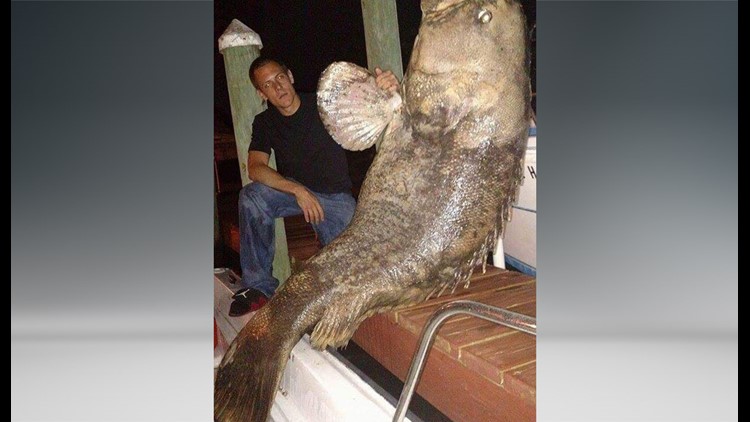FORT MYERS, Fla. — A Florida fisherman and a friend from Texas are hoping that the remains of a nearly 500-pound Goliath grouper they pulled from a Cape Coral canal will help promote awareness about the negative impact of water released from Lake Okeechobee.
Researchers from the Florida Fish and Wildlife Conservation Commission have taken samples of the 7.5-foot-long fish and said it will be two to three weeks before they can place a cause of death.
Daniel Armendariz, 23, of Cape Coral, and Sam Harmon, 24, of Texas but a former Lee County resident, were fishing early Tuesday morning in a Cape Coral canal not far from the Midpoint Bridge and the Caloosahatchee River when they passed what they thought was a manatee.


"We were about 20 minutes into our trip," Armendariz said. When they turned around to inspect the carcass they realized it was a Goliath grouper.
The find prompted the two men to call the FWC and request they come check out the fish. In the back of his mind, Armendariz was thinking the recent release of millions of gallons of nutrient-laden freshwater from Lake Okeechobee down the Caloosahatchee might have had something to do with the dead grouper.
"I'm thinking it's the low salinity," he said, a byproduct of the freshwater coursing down the river. "I can't be 100% sure."
However, Armendariz said, in the 13 to 14 years he's been fishing Southwest Florida waters, every time there's a significant release the effects downriver are what he termed "devastating."
He said that the grouper had not been dead long.


"He was very fresh. It had to have died between 24 and 48 hours," he said, and pointed to the lack of smell and the firm, white meat seen when sample cuts were taken.
Frank McCloy, a spokesman for the FWC at its St. Petersburg research institute, said that skin and tissue samples were taken by the commission's fish kill coordinator.
"The cause of death is unknown at this time," McCloy said. "It could be anything. Testing will shed more light."
In the meantime Armendariz said photos of the big fish are going viral on Facebook and elsewhere.
Armendariz is involved with the SWFL Clean Water Movement, a group looking to promote the negative effect of Lake Okeechobee water coursing down the Caloosahatchee, and he hopes the news of the grouper's death will help raise awareness.
A regular angler, Armendariz said he is out on the water six to seven days a week. He said that since the lake water has been released he's had to go further and further out to find saltwater for fishing.
"I have to go toward Captiva to break some good water," he said.


About Goliath grouper
Atlantic Goliath groupers are dull green, grey, or dark yellow to brown, with small dark spots on the head, body and fins. Smaller individuals of less than three feet long are more decorative, with three or four faint vertical bars on their sides.
Juveniles are tawny-colored with dark banding and blotching.
This predatory fish has several rows of small teeth in the jaw and small ‘pharyngeal’ teeth.
The Atlantic Goliath grouper (Epinephelus itajara) is one of the largest members of the sea bass family. Its body is large and stocky, measuring half as wide as it is long. The head is broad with small eyes and the pectoral fins and tail fins are rounded. The first and soft dorsal fins are joined together along the back of the fish, and the bases of the first dorsal fin and anal fin are covered with scales and thick skin.
Also known as black bass, esonue grouper, giant seabass, goliath grouper, guasa, hamlet, jewfish, southern jewfish, spotted jewfish.
Length: up to 8 feet
Weight: up to 800 pounds
Source: Various websites



